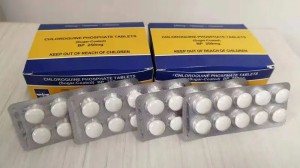Penicillin V potassium is a slow-onset antibiotic that is used to treat many types of mild to moderate infections caused by bacteria, including scarlet fever, pneumonia, skin infections, and infections affecting the nose, mouth, or throat. Penicillin V potassium is also used to prevent the symptoms of rheumatic fever.
Penicillin V potassium is also used to prevent infections of the heart valves in people with certain heart conditions who need to have dental work or surgery.
Penicillin V potassium may also be used for purposes not listed in this medication guide.
What is the most important information I should know about Penicillin V Potassium (Oral)?
You should not be treated with this medicine if you are allergic to penicillin.
Tell your doctor if you have ever had:
an allergic reaction to a cephalosporin antibiotic (Keflex, Omnicef, and others);
any type of allergy;
asthma or breathing problems;
a stomach or intestinal disorder;
heart disease; or
kidney disease.
If you have stomach problems or are sick with severe vomiting or diarrhea, your medication may not be as effective.
Penicillin V potassium oral liquid may contain phenylalanine. Tell your doctor if you have phenylketonuria (PKU).
Tell your doctor if you are pregnant or breastfeeding.
Do not give this medicine to a child without medical advice.
What are the side effects of Penicillin V Potassium (Oral)?
Get emergency medical help if you have signs of an allergic reaction: hives; fever, chills, joint pain; difficult breathing; swelling of your face, lips, tongue, or throat.
Call your doctor at once if you have:
severe stomach pain, diarrhea that is watery or bloody (even if it occurs months after your last dose);
easy bruising or bleeding;
pale or yellowed skin, dark colored urine;
numbness, tingling, or burning pain;
urination problems; or
fever, swollen glands, itching, joint pain, or not feeling well.
Common side effects may include:
nausea, vomiting, upset stomach;
diarrhea;
swollen, black, or “hairy” tongue;
rash; or
vaginal itching or discharge.
This is not a complete list of side effects and others may occur. Call your doctor for medical advice about side effects.
What drugs and food should I avoid while taking Penicillin V Potassium (Oral)?
Do not share this medicine with another person, even if they have the same symptoms you have.
Antibiotic medicines can cause diarrhea, which may be a sign of a new infection. If you have diarrhea that is watery or bloody, call your doctor before using anti-diarrhea medicine.
How to take Penicillin V Potassium (Oral)?
Use Penicillin V Potassium (Oral) exactly as directed on the label, or as prescribed by your doctor. Do not use in larger or smaller amounts or for longer than recommended.
Follow all directions on your prescription label and read all medication guides or instruction sheets. Use the medicine exactly as directed.
You may take penicillin V potassium with or without food.
Shake the oral liquid before you measure a dose. Use the dosing syringe provided, or use a medicine dose-measuring device (not a kitchen spoon).
When given before surgery or dental work, penicillin V potassium is usually taken 1 hour before and 6 hours after the procedure. Follow your doctor’s dosing instructions very carefully.
Use this medicine for the full prescribed length of time, even if your symptoms quickly improve. Skipping doses can increase your risk of infection that is resistant to medication. Penicillin V potassium will not treat a viral infection such as the flu or a common cold.
After you have finished all doses, your doctor may want to do tests to make sure your infection has completely cleared up.
Store the tablets at room temperature away from moisture, heat, and light.
Store the liquid in a refrigerator. Do not freeze. Throw away any unused liquid after 14 days.
Post time: Mar-07-2024





